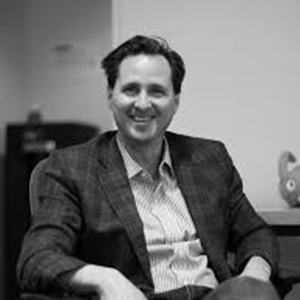Walter Issacson: By the 3rd of June, 1861, America was at war. As the echoes of cannon fire faded at Fort Sumpter, thousands of southerners joined the Confederate Army. Among them was an 18 year old engineering student from Virginia named James Hanger. He enlisted to rip the Yankees, but he had no idea that he was destined to change millions of lives in another way.
Walter Issacson: After serving two days, his world was turned upside down. That day in Philippi, Virginia, Hanger was captured after a cannonball tore through his leg. A Union surgeon amputated his leg after which Hanger was freed in a prisoner exchange and returned to his family home, seemingly crippled for life.
Emily Mayhew: He kind of goes into his room for three months, and his family sit down in the parlor of their house, and they worry about him. There’s a lot of noise. There’s a lot of banging, shuffling back and forth, and I think they’re generally concerned about his condition.
Walter Issacson: Emily Mayhew is a historian at London’s Imperial College. Before the civil war she says a battlefield amputee’s prospects were grim.
Emily Mayhew: The chances are they won’t be able to have a prosthetic fitted. They’re going to have a short, relatively miserable life on crutches or sat somewhere where they can’t really move. There are wheelchairs, but they’re not available to people who don’t have any money.
Walter Issacson: Shrouded in worry, James Hanger’s family listened and waited.
Emily Mayhew: And then on the day that I think of as being this real turning point, they hear his door open and then they hear something extraordinary. And it’s James Hanger on the prosthetic leg with a knee joint that he as an engineer has designed, and he’s coming downstairs. Because he’s designed a leg where the knee can bend. And if the knee can bend, he can lift it with his thigh muscles. It means that he can hold onto a banister, but he can come downstairs. And although it’s not digital, it’s a paradigm shift, and I think of that sound of this young engineer coming downstairs. And being able to walk into his parents’ parlor and everything changes.
Walter Issacson: It was a genesis moment in modern prosthetics. Hanger was determined that unlike the straight, unimaginative peg legs of his era, his prosthetic would mimic a natural limb. His wooden leg carved from the wood used to make barrels incorporated rubber bumpers with a hinge knee and ankle. For James Hanger, the first recorded amputee of the civil war, it was the beginning of a global enterprise that he would oversee until his death in 1919 and, which still bears his name today. Hanger would go on to develop and market the first mass produced affordable prosthetic limb.
Walter Issacson: I’m Walter Isaacson and you’re listening to Trailblazers, an original podcast from Dell Technologies.
Speaker 3: You might say, Craig Hutto is part bionic man.
Speaker 4: Arms, legs.
Speaker 5: There’s over 3 million amputees every year who need a new or replacement.
Speaker 6: A medical dream comes true.
Speaker 7: I went from being disabled to somebody that might even be super abled.
Walter Issacson: Just as the civil war had transformed a nation, it changed medicine and prosthetics too. Where in the past a catastrophic injury to a limb might be a death sentence. Union and Confederate surgeons became adept at performing amputations in the field, tens of thousands of them by some estimates.
Emily Mayhew: We always talk about how much war drives medicine. In fact, it’s not so much war. There’s something a little bit more subtle than that. What really drives medicine are unexpected survivors.
Walter Issacson: Emily Mayhew.
Emily Mayhew: It’s the unexpected survivor, but the person who lives to require more treatment to require the prosthetic limb. That’s the thing that really changes medicine. But, unquestionably on both sides of the American civil war. The surgeons get incredibly skilled. They get very quick and amputation. They learn that the best thing for prosthetic fit after the patient has gone home, is to leave as much flesh and muscle as possible.
Walter Issacson: The needs of thousands of civil war survivors fueled the growing prosthetics industry, which soon found itself serving a new category of clients.
Emily Mayhew: Prosthetics is not only driven by the military, it’s driven by the demands of industrialization. So very large scale industrial projects, the laying of railways, the digging of canals, the laying of roads, the creation of very large factories. What they have in common with war is that they injured young men who are going to have long lives, and they’re going to have long lives where they want to walk or be able to ride a bicycle.
Walter Issacson: For the upper body amputees of the late 19th century maintaining their quality of life, often dependent on their ability to take on an industrial job and just as importantly to commute to work. This is where an old pirate trope save the day.
Emily Mayhew: One of the things that a hooked hand has a resurgence is because people want to be able to hold a bicycle handle bar, so even if they’ve lost an upper limb, whether they’ve lost a hand or at the elbow or at the shoulder, they want to be able to hold on to a bicycle handlebar or indeed the bar of one of the new underground trains, or one of the buses and they can still go to work.
Walter Issacson: By the 20th century prosthetics manufacturers, including James Hanger’s company had expanded to Europe. They were just in time. When the great war began in 1914 the prosthetics industry was ready. But battlefield surgeons were not.
Emily Mayhew: There was just enough time between the American civil war, and the first world war for it to be a new generation of doctors. For them to look back and say, well, this was over 50 years ago. How is this going to be relevant? And also the American civil war is really, again, the scale and the horror of the injuries are so bad that there was a concern, particularly amongst the British medics, that if they show too much material, if they show too many images, that it’s going to put off young doctors coming and joining up with the war effort. So although the industry, the prosthetic industry is ready, the medical profession is not ready, not on the scale that’s required. So many of the lessons that those Southern and Northern doctors learn on the battlefields in the American civil war will be relearned on the Western front.
Walter Issacson: Throughout the wars of the 20th century, prosthetic technology changed little, yet battlefield medicine made huge advances. Mobile army surgical hospitals in Korea or mass units revolutionize battlefield medicine. A decade later in Vietnam, care for the wounded became even more efficient.
Emily Mayhew: You’ve got fast evacuation of casualties, highly trained paramedics, the team medic in the field saving a life, getting them onto to a motorized ambulance or to a helicopter, getting them to a very well-staffed field hospital of highly experienced surgeons. And so lives that would have been lost otherwise are in fact saved. There was also this idea, it’s perhaps one of the most extraordinary developments in prosthetics isn’t made in the prosthetic company. It’s made in the field hospital where people understand that perhaps people can survive wounds, but they would otherwise or they would have been taught that people will die from.
Emily Mayhew: So in Vietnam, this is the point at which we see a really significant cohort in our era, so not from the first world war ara, but in our era of people who survive losing both their legs. It was medical dictum before the beginning of the 1960s but if you lost both your legs, your quality of life is going to be very poor, and the chances are you weren’t going to survive. But in Vietnam war, the surgeons say, well, if you lose both your legs, we’re going to save you. We’re going to save you and we’re going to send you home.
Walter Issacson: Yet for all the surgical advancement, prosthetic limbs themselves, had advanced little since the days of James Hanger. Soon after the Vietnam era, all of that changed. New technologies from composites, advances in robotics, biomechanical innovation, and the microprocessor opened up vast possibilities for prosthetic users. To the brightest minds in prosthetics, it soon became evident that these advances would help overcome barriers that had lingered since the days of James Hanger. Such as, how to design a prosthetic lag to negotiate stairs, steep grades, or uneven ground with the relative ease of a natural limb. Since 1890 that mission has driven many of the brightest minds of the British prosthetics firm, Blatchford.
Walter Issacson: The digital age would see a number of eureka moments at Blatchford, but not the instant solution kind you see in the movies.
Saeed Zahedi: In my dream, I think eureka moments happen instantly.
Walter Issacson: Saeed Zahedi is a technical director at Blatchford.
Saeed Zahedi: I take a lot of notes. I’m very famous for writing everything, which comes to my head and probably never go back to them, but it is there. There are visions. I think the eureka moment comes from when you are involved in a thinking process and in my experience, the creative part of it comes from not being scared to think of every solution.
Walter Issacson: In the 1980s the team at Blatchford pioneered the use of carbon fiber prosthetics, providing more flexibility, durability and strength. A decade later they introduced microprocessors to a prosthetic knee and eventually an ankle. After that, the next innovation felt self-evident.
Saeed Zahedi: I think having then the microprocessor control ankle, and the microprocessor control knee. It was natural thing to do. Now, why not put the two together and complete that picture?
Walter Issacson: That thinking led to Blatchford’s link system an above the knee, prosthetic limb whose ankle and knee talk to each other and coordinate their actions providing amputees with unprecedented ease and confidence. It combines four microprocessors and seven centers across the knee and ankle joints. These components are constantly gathering and exchanging data, allowing the leg to adjust its hydraulics and pneumatics to adapt to changes in the terrain. Today the link system is used by roughly three to 4,000 amputees. For Saeed Zahedi, refining the technology is good, but it’s only worthwhile once it’s widely accessible and affordable.
Saeed Zahedi: I couldn’t really put the hand in the sort of line of time and say, that was the time, which occurred to me. It was more the question of when can we mass produce it, when can we make it available for everyone and what features can be add, which will move one step closer towards the total rehabilitation?
Walter Issacson: Zahedi and his team also understand that one of the great barriers in the field of prosthetics isn’t technology, but finding ways to manage pain. Emily Mayhew.
Emily Mayhew: We know that in the United Kingdom in particular, 50% of prosthetic wearers experience pain to the point at which they are unable to work. And interestingly, I don’t want to use, really want to use the word interesting because actually tragically they’re experiencing two kinds of pain. They’re experiencing residual limb pain, so that’s pain in what they’ve got left in the body that they’ve got left, but they’re also experiencing phantom limb pain, so they’re experiencing pain and really distracting sensations in the limb they’ve no longer got. We’ve done some research on our cohort for amputees from Iraq and Afghanistan in the 21st century, and we know that there’s been about a 1% improvement in pain outcomes for prosthetic wearers from the first world war. So in a hundred years we haven’t got very far on what is really the most significant challenge for a prosthetic wearer.
Walter Issacson: Zahedi agrees for his team, pain management falls under the first of two C’s that are essential for successful prosthetic. Comfort and confidence. Managing the effects of discomfort or sweat in a residual limb is no less important than the mightiest microprocessors and situational awareness sensors. As for the next step, if the joints of a prosthetic limb can talk to one another to govern movement, how long before a prosthetic limb is connected directly to the brain? For one group of trailblazers, it will take a chance encounter with a raccoon to answer that question.
Walter Issacson: Canton, Ohio. It’s early one June morning in 2015 when Melissa Loomis heard a commotion in her backyard, her dogs had cornered a raccoon. Her instinct to protect all three animals kicked in. Loomis was an animal lover and volunteer at the Stark County dog pound. She ran out to see that one of the dogs had the raccoon by the tail moving quickly, she caught the raccoon and released it over the fence, but not before the animal had bit her lower right arm.
Walter Issacson: Her husband rushed her to the emergency room where it was determined that the raccoon did not carry rabies, but it did carry a severe infection. Over the weeks that followed, the wound worsened then became septic. That December, Melissa Loomis’ right arm would have to be amputated above the elbow. Her surgeon referred her to the Applied Physics Lab at Johns Hopkins University in Maryland.
Mike McLoughlin: So Melissa is a really, it’s a phenomenal story, and she’s a phenomenal individual.
Walter Issacson: Mike McLoughlin is Vice President of Research for Zeteo Tech the former Chief Engineer at the Applied Physics Lab.
Mike McLoughlin: So the surgeon that did Melissa’s operation to remove her arm, what he wanted to do was to ensure that she was able to use an advanced prosthetics, and he had been kind of watching what people had been doing in the field and was aware of it.
Walter Issacson: Behind all advanced prosthetics is the right surgery and proper rehab. In Melissa’s case, the surgeon, Dr. AJ Seth, remapped the nerves in her arm to interact with the prosthetic.
Mike McLoughlin: What he did was a technique known as targeted re-innervation. So if somebody has an amputation, the limb is gone. But the nerves that used to say run down to the hand are still there, and they’re just not going anywhere. And so what targeted re-innervation does is actually give those nerves a place to go. And so you have basically two types of nerves. You have the motor nerves, and those are the ones that move your muscles. So you move your hand or your arm. And then you have sensory nerves that allow your receptors in your hand and elsewhere in your arm to send signals back to the brain. And so what he did was took some of the motor nerves and attach those to pieces of muscles. So now if she thought, for example, if she wants to move her index finger, the nerve that used to fire the muscles that would pull those tendons would now flex a little piece of muscle somewhere in her upper arm. And we can detect that.
Walter Issacson: With those nerves remapped, Melissa worked with McLoughlin’s team at Johns Hopkins, since 2006 they’ve been working on a program initiated by DARPA, the Defense Advanced Research Projects Agency. Its mission is to create upper body artificial limbs that restore near natural motor and sensory capability to upper limb amputees.
Walter Issacson: Not only did the prosthetic arm respond to commands from Melissa’s brain, it went one better. Feeding feelings and sensations back to her brain. It was prosthesis and brain in conversation.
Mike McLoughlin: And so this is really amazing because what you’re essentially doing is tapping into the old circuits. So the brain remembers that the arm used to be there and still remembers where those nerves went. So it becomes a very easy way for someone like Melissa to control the prosthetic because she can think about moving the prosthetic, and it’ll move. And then when the prosthetic encounters an object, we can actually take that sensation, say pressure and actually feed it back to those same nerves. And she actually will perceive it as sensation in her fingers.
Walter Issacson: Without looking at a prosthetic hand, Melissa could grasp a styrofoam cup without crushing it, and pick up an egg without breaking it. And to Mike McLoughlin, it’s just the beginning of what’s possible in neuroprosthetics.
Mike McLoughlin: I mean, the tools we have now are still pretty crude. When you move your hand, you’re involving probably 100 billion neurons in that task. We’re seeing just a handful of those right now.
Walter Issacson: Blatchford’s Saeed Zahedi believes we’re at the Renaissance of prosthesis, Mike McLaughlin concurs.
Mike McLoughlin: Prosthetics for many years was a very static field. It wasn’t a lot of progress made, and it’s really within the past 10 to 15 years that we’ve really seen kind of this merging of advance engineering, mechanical engineering, electrical engineering, computer science, biology, all together to really do some very remarkable things.
Walter Issacson: 3D printing has for many, become part of the Renaissance. Initiatives are in the works that enable amputees to scan and print their own customized prosthetics, dramatically reducing the time and cost of manufacturing. Behind all these remarkable initiatives are equally remarkable people.
Walter Issacson: One fair morning in January of 1982, 17 year old Hugh Herr and a 20 year old friend, began their ascent of Mount Washington. Then the weather changed. Faced with a hundred mile an hour winds and a wind chill of minus 110 degrees Fahrenheit. The two men, dug snow caves and bundled together as hypothermia set in and with it disorientation. Four days melded together to feel like one single 24 hour period. Death felt near. They were discovered by a snowshoer and airlifted to a hospital. Where Herr was diagnosed with severe frostbite. Soon after both of his legs were amputated below the knees. Today, professor Herr leads a prosthetics innovation team at the MIT Media Lab in Cambridge, Massachusetts, where to him, the Renaissance is just beginning. Not only does professor Herr embody the media labs will work. He provides invaluable personal insights. He vividly recalls the labeling that came with becoming an amputee.
Hugh Herr: I was told by doctors and nurses and all of society that the technology was wonderful. It was what we had. It was always going to be what we had, and I should just live with it. I should just accept it because I was now broken and that was a fact of life.
Walter Issacson: To the young scientist who climb mountains for fun. This line of thought was unacceptable.
Hugh Herr: And I quickly realized that was complete nonsense. I wasn’t broken. The technology that was offered to me was absolutely ridiculous. It was without computation, without sensing, without actuation. They were dumb limbs lacking any type of sophistication. The root cause of my disability was the technology, not my body.
Walter Issacson: That defiance would shape Herr’s creative outlook. Early in his recovery, he realized that the artificial part of himself was malleable and could assume any number of shapes and functions. He developed a specially crafted pair of prosthetic legs, slightly longer and lighter than natural ones that actually made him a better climber. The prosthetics developed at the media lab today, employ what they call neuro embodied design, looking at the prosthetic brain relationship in a whole new way.
Hugh Herr: So most of the time when designers design, they view the human body as invariant and unchangeable. And they designed components to fit that unchanging body. We’re relaxing that in neuro embody design and we’re thinking about how can we fundamentally change the human body. It’s proteins, it’s organs, it’s tissues to really have a more clean, cohesive communication between the nervous system and synthetic computation.
Walter Issacson: As a walking illustration of his team’s work, Professor Herr’s legs are elegantly robotic looking. A number of computers and dozen sensors work with a series of muscle like actuators allowing him to walk, run, jump, and even dance with a confidence that generations of amputees could not have imagined.
Walter Issacson: Herr’s team imagines advanced prosthetics, moving sports beyond the sort of running blades that Oscar Pistorius brought to the world of track and field. He sees augmentation technology inspiring a new generation of extreme sports.
Hugh Herr: We will have exoskeletons that augment to running that will lead to power running. We’ll have exoskeletons that augment jumping that will lead to super turbo charged basketball and swimming and climbing and on and on and on.
Walter Issacson: Herr has even mused about prosthetic wings given humans flight. But stresses that before we can fly we need to learn to walk. Like the teams at Blatchford and Johns Hopkins, the one at the media lab dedicates a large amount of its time and resources to understanding and quantifying the surprisingly complex dynamics of walking.
Hugh Herr: A person with a normal biological limbs, they go up and down steps and slopes and their legs are doing these extraordinarily complex movements and the person is not consciously aware of what’s happening. It’s really funny that in the science of biomechanics and neural control, we still don’t have a very, very deep understanding of how biological walking works, which is kind of funny because most humans can walk, but we can’t describe how it works.
Walter Issacson: And there lies the irony of prosthetic innovation driven in no small part by the ravages of war. Teams of the world’s greatest minds are revealing fantastic new possibilities, but that can only happen once we attained a deeper understanding of the complex magnificent human machine.
Walter Issacson: I’m Walter Isaacson, and this is Trailblazers, an original podcast from Dell Technologies. To learn more about the fascinating world of prosthetics, you can head to our website at delltechnologies.com/trailblazers that’s delltechnologies.com/trailblazers. Thanks for listening.
 Hugh Herr
is Director of biomechatronics at MIT. TIME magazine coined him the “Leader of the Bionic Age” because of his work in biomechatronics – technology that marries human physiology with electromechanics.
Hugh Herr
is Director of biomechatronics at MIT. TIME magazine coined him the “Leader of the Bionic Age” because of his work in biomechatronics – technology that marries human physiology with electromechanics.
 Sir Saeed Zahedi
is the Technical Director Blachford Limited. Zahedi was responsible for the commercialization of the first Intelligent Prosthesis and the world’s first fully integrated limb system, Linx.
Sir Saeed Zahedi
is the Technical Director Blachford Limited. Zahedi was responsible for the commercialization of the first Intelligent Prosthesis and the world’s first fully integrated limb system, Linx.
 Mike McLoughlin
is the Vice President for Research, Zeteo Tech, Inc., a biodefense and medical device Company developing revolutionary point of care devices.
Mike McLoughlin
is the Vice President for Research, Zeteo Tech, Inc., a biodefense and medical device Company developing revolutionary point of care devices.
 Emily Mayhew
is historian in residence in the Department of Bioengineering at Imperial College London, where she works with the scientists and clinicians of the Centre for Blast Injury Studies.
Emily Mayhew
is historian in residence in the Department of Bioengineering at Imperial College London, where she works with the scientists and clinicians of the Centre for Blast Injury Studies.
